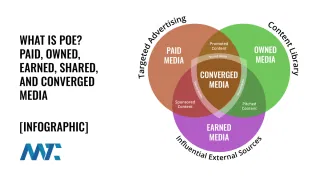Teleprospecting remains a critical function in B2B lead generation and revenue growth. However, the question of ownership—whether Marketing or Sales should control teleprospecting efforts—continues to be a point of friction in many organizations. Without clear roles and coordination, businesses risk losing productivity, wasting budget, and missing out on high-quality leads.
This article aims to define teleprospecting, diagnose common dysfunctions between Marketing and Sales, and present an ideal progression model that integrates both teams effectively for better outcomes.
Table of Contents
What Is Teleprospecting?
Teleprospecting is the process of using outbound phone calls to identify and qualify potential leads. It is distinct from traditional cold calling because it focuses on nurturing early interest, gathering intelligence, and initiating conversations that can be passed to Sales once specific qualification criteria are met. Teleprospecting is often used in B2B settings where deals are complex and require multiple touchpoints.
It functions as a bridge between initial marketing engagement and sales conversion, making it critical to get the timing and handoff just right.
The Battle for Ownership
The central conflict in many organizations is this: Who owns teleprospecting? Marketing often claims it as an extension of lead nurturing, while Sales sees it as a vital precursor to closing deals. This tug-of-war creates confusion around key questions:
- What defines a qualified lead?
- When should a lead be passed to the Sales Team?
- Who should be responsible for follow-up and conversion?
When these questions go unanswered, teleprospecting efforts suffer. The result is often a breakdown in alignment between departments, leading to wasted resources and missed opportunities.
Typical vs. Ideal Lead Progression
Here’s a comparison of how leads typically move through organizations with siloed teams versus how they should progress under a collaborative model:
| Marketing owns TOFU | Ideal Lead Progression | |
|---|---|---|
| Lead Source | Marketing passes leads to Sales | Low conversion, poor accountability, and high churn |
| Engagement | Leads may receive low-touch follow-ups or sit idle | Marketing qualifies leads through content, scoring, and nurturing before handoff |
| Lead Hand-Off | Sales picks up all leads regardless of readiness | Only sales-ready leads are passed to Sales |
| Follow-Up | Sales filters, follows up inconsistently, and often blames lead quality | Sales focuses only on qualified leads and invests time in closing |
| Outcome | Low conversion, poor accountability, high churn | High conversion, clear accountability, and mutual respect between departments |
Diagnosing Marketing-Sales Misalignment
Organizations that fail to define ownership of teleprospecting often suffer from common dysfunctions. These include:
- High lead volume, low qualification: Marketing teams may flood Sales with leads without proper vetting.
- Poor feedback loops: Sales may dismiss leads as unqualified without offering insight to improve targeting.
- Unclear hand-off processes: Lack of documentation or criteria for when a lead is ready for Sales intervention.
These signs point to a lack of strategy, not a lack of opportunity.
Creating the Right Mix of Responsibilities
Effective teleprospecting thrives when Marketing and Sales operate within clearly defined swim lanes while maintaining tight alignment. Here’s how responsibilities can be shared:
- Marketing (Inbound):
- Brand awareness: Increase visibility through targeted campaigns, SEO, and high-quality content.
- Lead generation (Leadgen): Capture and attract interest through gated assets, landing pages, and webinars.
- Lead Nurturing & Scoring: Utilize automation and behavioral tracking to develop leads until they’re ready.
- Qualification criteria: Apply firmographic and behavioral scoring to determine which leads to pass to Sales.
- Sales (Outbound):
- Lead follow-up: Quickly engage leads that meet Sales-qualified criteria.
- Conversion: Guide qualified leads through discovery, solution alignment, and closing.
The ideal lead hand-off occurs when Marketing has vetted leads through scoring models, confirmed interest or need, and passed only those who fit buyer personas and budget/timeframe criteria.
Why Marketing Should Own Lead Gen and Nurturing
Handing over responsibility for early-stage lead development to Marketing offers several strategic advantages:
- Efficiency in pipeline building: Marketing can scale lead generation through automation and content far more effectively than Sales.
- Data-driven optimization: Marketing teams often have access to more advanced tools for tracking engagement and behavior, allowing them to improve their campaigns continually.
- Less burden on Sales: By removing poor-fit leads from the queue, Sales can focus exclusively on high-conversion opportunities.
- Better conversion rates: When Sales only receives pre-qualified leads, win rates increase and sales cycles shorten.
Final Thoughts
Teleprospecting is no longer just a Sales tactic or a Marketing tool—it’s a shared responsibility that requires synchronized effort. The key to success lies in clearly defining roles, setting qualification standards, and implementing feedback loops that allow both teams to improve.
By giving Marketing the mandate to generate and nurture leads—and Sales the focus to close them—organizations can transform teleprospecting from a point of friction into a powerful growth engine.
